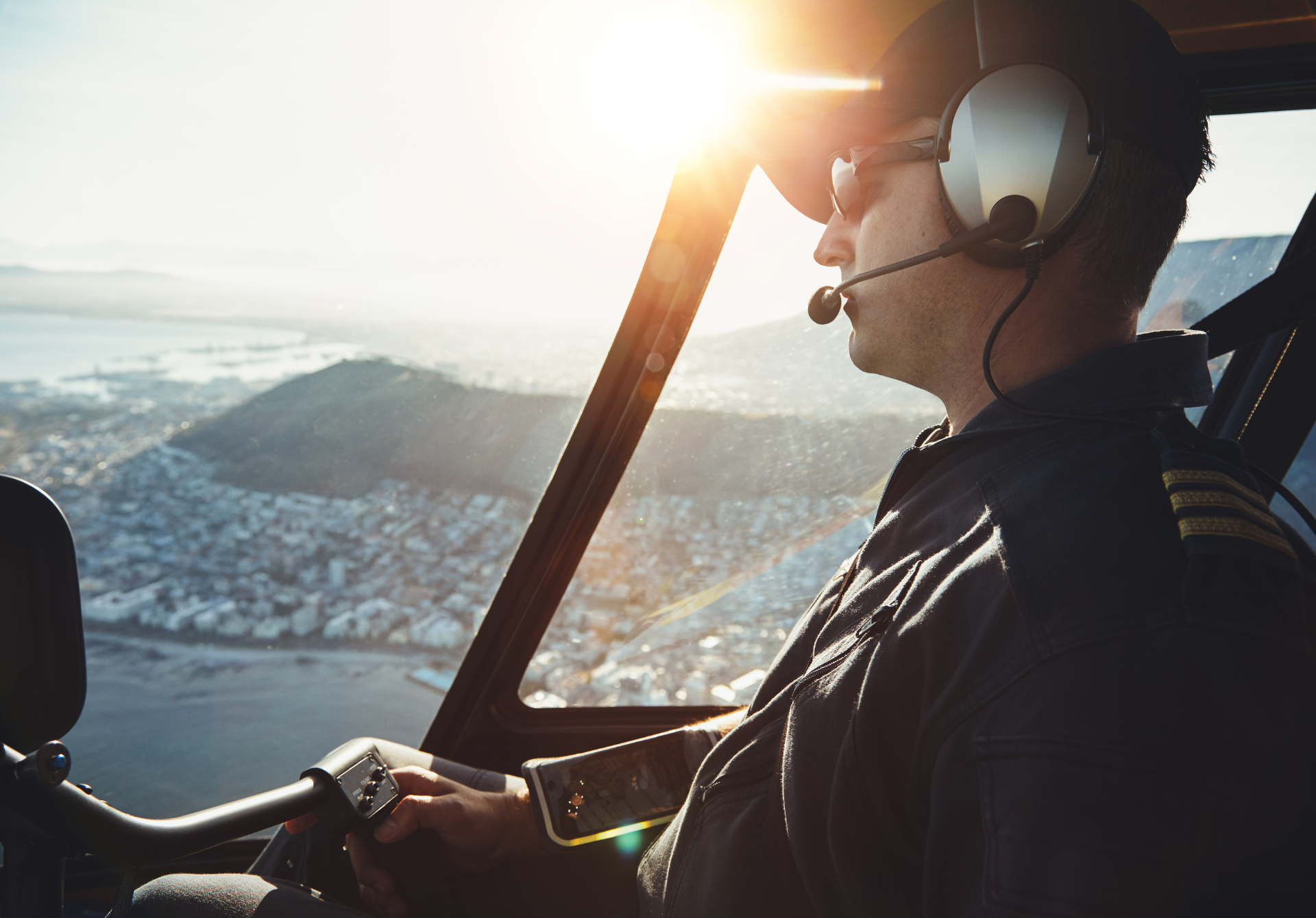In the fascinating world of aviation, pilots and air traffic controllers use complex language to ensure safety and clear communication. One of the less commonly known but highly significant terms is “Pan Pan.” For those interested in private jet aviation or who simply want to deepen their understanding of aviation safety protocols, grasping the meaning and implications of “Pan Pan” is essential.
What Does “Pan Pan” Mean in Aviation?
“Pan Pan” is a radiotelephony signal that indicates an urgent situation requiring immediate attention, but it does not indicate a life-threatening emergency. Derived from the French word “panne,” meaning breakdown, “Pan Pan” is essentially a step below the more severe “Mayday” call. When a pilot issues a “Pan Pan” call, it signals that they need help to address a problem that, while serious, does not yet pose an imminent threat to the aircraft or its passengers. It’s a way to alert air traffic controllers and other nearby aircraft that something is wrong, and assistance may be needed to resolve the issue before it escalates.
In private jet aviation, “Pan Pan” is a crucial communication tool, as it helps to prioritize response efforts in the airspace. For example, if a jet encounters mechanical issues, such as malfunctioning landing gear, the pilot might declare a “Pan Pan” to request priority landing or specialized assistance without triggering a full-scale emergency response.
How Is “Pan Pan” Used Differently from “Mayday”?
Understanding the difference between “Pan Pan” and “Mayday” is vital for anyone interested in aviation, especially in the private jet industry. While both are distress signals, they serve different purposes and convey varying levels of urgency. “Mayday” is the universal distress call for a life-threatening emergency, such as a fire on board, a severe medical emergency, or a critical system failure that endangers the aircraft and its occupants. When a pilot declares “Mayday,” it demands an immediate and full-scale emergency response from all available resources.
On the other hand, “Pan Pan” is used when the situation, though urgent, is not immediately life-threatening. For instance, if a private jet experiences engine trouble but is still operational, the pilot might declare “Pan Pan” to notify air traffic control and request priority handling. This distinction allows controllers to manage airspace effectively, providing the necessary assistance without causing unnecessary alarm or diverting resources from more critical emergencies.
Why “Pan Pan” Matters in Private Jet Aviation
In the realm of private jet aviation, where time is often of the essence, and the stakes are high, the “Pan Pan” signal plays a pivotal role. Private jet operators prioritize safety and efficiency, and “Pan Pan” helps them navigate situations where immediate attention is required without escalating to a full-blown emergency. This can be particularly important in scenarios such as medical transport flights, where quick and calm resolution of issues is critical.
Moreover, “Pan Pan” allows for better communication between the pilot and air traffic controllers. By clearly indicating the level of urgency, “Pan Pan” helps ensure that controllers can provide the necessary support, such as rerouting flights, clearing airspace, or coordinating with ground services, without causing undue panic or disrupting other flights.
Examples of Situations Requiring a “Pan Pan” Call
While “Pan Pan” isn’t as common as routine communications, it’s not unusual in private jet aviation. Some typical scenarios that might warrant a “Pan Pan” call include:
- Minor mechanical issues, such as landing gear malfunction or minor engine problems, where the aircraft is still controllable.
- Medical issues on board that require prompt attention but are not immediately life-threatening.
- Navigation system failures where the aircraft is still able to fly but needs assistance to safely reach its destination.
- Fuel shortages that are not critical but could become problematic if not addressed quickly.
Each of these situations, while urgent, does not constitute an emergency that would require a “Mayday” call. By using “Pan Pan,” the pilot effectively communicates the need for assistance while avoiding the more severe implications of a “Mayday” declaration.
History and Evolution of “Pan Pan” in Aviation
The “Pan Pan” signal has a long history in aviation, dating back to the early days of radio communication. The term originated in the maritime industry and was later adopted by aviation as radio technology became integral to flight operations. Over time, the “Pan Pan” signal has evolved to meet the changing needs of pilots and air traffic controllers, reflecting the growing complexity of aviation safety protocols.
In the past, pilots would rely on more rudimentary signals, but as aviation technology advanced, the need for a standardized, universally recognized distress call became evident. “Pan Pan” filled the gap for situations that required urgent attention but were not life-threatening, allowing for a more nuanced approach to emergency communications in the air.
Understanding the “Pan Pan” Hierarchy: When to Use It?
Knowing when to declare “Pan Pan” is a critical skill for pilots, particularly in private jet aviation, where swift and precise decision-making is crucial. The decision to use “Pan Pan” rather than “Mayday” hinges on the pilot’s assessment of the situation’s severity. If the issue is serious but manageable, “Pan Pan” is appropriate. However, if the situation escalates or new information comes to light that increases the risk to the aircraft, a “Mayday” call might be necessary.
This hierarchical approach ensures that resources are allocated efficiently and that the most critical situations receive the fastest response. It also helps avoid overwhelming air traffic control and emergency services with unnecessary full-scale emergency declarations, maintaining the overall safety and order of airspace operations.
Training for “Pan Pan” Calls: What Pilots Learn
Pilots undergo rigorous training to ensure they can correctly assess situations and use “Pan Pan” calls when necessary. This training includes simulated scenarios where pilots must determine the appropriate level of response, including when to issue a “Pan Pan” call. By practicing these scenarios, pilots develop the judgment needed to make quick, accurate decisions in real-life situations.
In private jet aviation, where pilots often fly high-profile or medically sensitive passengers, the ability to manage unexpected issues with a “Pan Pan” call is especially important. This training ensures that they can handle a wide range of situations calmly and effectively, minimizing risk and ensuring the safety of everyone on board.
Common Misconceptions About “Pan Pan”
There are several misconceptions about “Pan Pan” that can lead to confusion, particularly among those new to aviation. One common misunderstanding is that “Pan Pan” is synonymous with “Mayday” and that the two can be used interchangeably. However, as we’ve explored, “Pan Pan” is specifically for non-life-threatening situations, whereas “Mayday” is reserved for critical emergencies.
Another misconception is that declaring “Pan Pan” will automatically lead to an emergency response similar to “Mayday.” In reality, while “Pan Pan” does prompt a heightened level of attention and assistance, it does not trigger the same level of emergency response as a “Mayday” call. This distinction is vital for maintaining clarity and efficiency in air traffic management.
Understanding the meaning and importance of “Pan Pan” in aviation is essential for anyone involved in or passionate about private jet travel. This distress signal, while less urgent than a “Mayday,” plays a crucial role in ensuring that pilots, passengers, and air traffic controllers can manage urgent situations effectively and safely. Whether it’s addressing minor mechanical issues, handling medical concerns, or navigating unexpected challenges in the air, “Pan Pan” provides a structured, efficient way to communicate and resolve problems before they escalate.
As the world of private jet aviation continues to grow and evolve, the “Pan Pan” signal will remain a cornerstone of aviation safety, helping to keep the skies safe and ensuring that even in the face of unexpected challenges, pilots and their passengers can reach their destinations with confidence.

